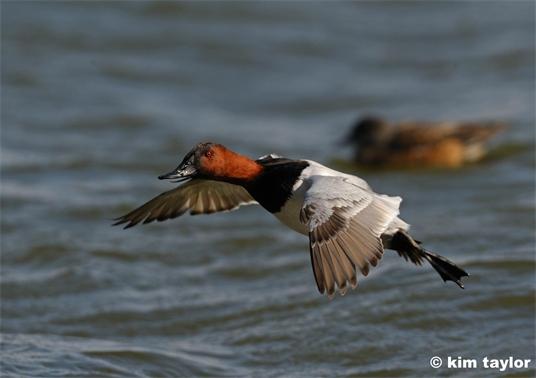The Canvasback

Canvasbacks might have been named for the rough texture of their pale backs—or for the canvas bags in which Chesapeake Bay duck carcasses were once shipped to restaurants.
Canvasbacks are diver ducks well equipped with their own form of flippers—large webbed feet that make them smooth and graceful swimmers. They spend much of their time in the water and use their long bills to feed by digging through bottom sediments in search of aquatic plant stems and roots, or submerged insects, crustaceans, and clams.
They are omnivores and in a group they are called a flock.
Canvasbacks are traditionally popular with hunters. By the late 1980s and early 1990s their numbers had been dramatically decreased by hunting pressure, lead poisoning from ingestion of lead shot, and the gradual loss of both suitable breeding and wintering habitats.
Size relative to man:

It is most likely that the whiter duck may be the female and the other the male. They are also a little weird as they have red eyes!
Thank you for reading my blog, hope you have all had lovely Easters.
No comments:
Post a Comment